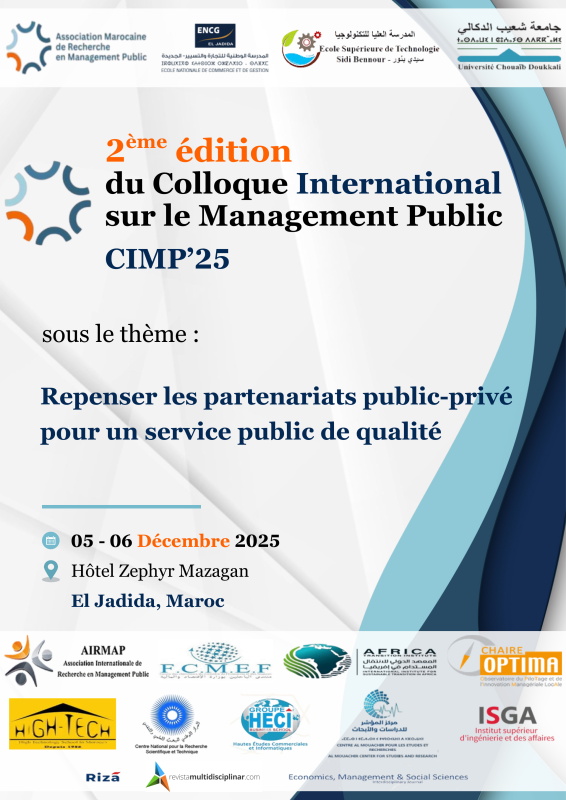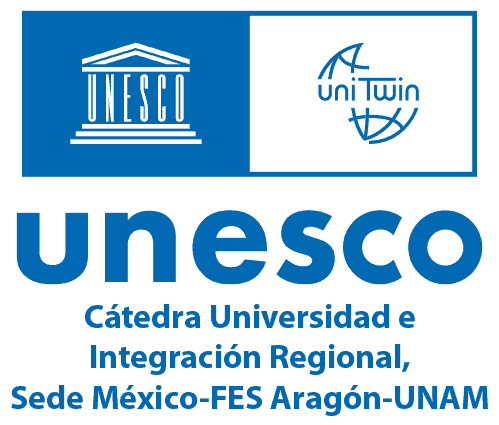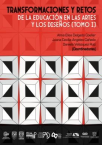A Integração Dinâmica de Conteúdo e Língua durante Discussão Bilíngue de Questões Matemáticas com Enunciado
DOI:
https://doi.org/10.23882/MJ1902Palavras-chave:
aprendizagem integrada de conteúdo e língua, discussão bilíngue, questões matemáticas com enunciado, matemática de segundo grauResumo
Este estudo explora as estratégias adotadas por um mentor bilíngue, com a finalidade de integrar a aprendizagem de conteúdo e uma segunda língua, bem como, dar apoio pedagógico a um aluno com proficiência limitada na língua inglesa durante a discussão de questões matemáticas com enunciado. Os nossos resultados revelam um espaço curricular integrado no qual o foco pedagógico oscila entre a língua e o conteúdo. O suporte pedagógico é caracterizado por um foco linguístico (atenção a palavras utilizadas) ou um foco epistêmico (atenção a ideias matemáticas). As estratégias linguísticas envolvem a tradução oral. Em contrapartida, as estratégias epistêmicas envolvem uma gesticulação metafórica de conceitos abstratos, numa forma espacial mais concreta. Também se argumenta que a aprendizagem do conteúdo, numa segunda língua, requer o ensino de vocabulário antes de iniciar o conteúdo proporiamente ditto. Uma abordagem mais flexivel é necessária, na qual os estudantes recebam o apoio de uma forma natural.
Referências
Bogdan, R.C., & Biklen, S.K. (2003). Qualitative research for education: An introduction to theory and methods (4th ed). Boston, MA: Allyn and Bacon.
Boroditsky, L. (2000). Metaphoric structuring: Understanding time through spatial metaphors. Cognition, 75, 1-28.
Boroditsky, L., & Ramscar, M. (2002). The roles of body and mind in abstract thought. Psychological Science, 13, 185-189.
Bransford, J.D., Brown, A.L., & Cocking, R.R. (2002). How people learn: Brain, mind, experience, and school. Washington, DC: National Academy Press.
Burgoon, J.K., Buller, D.B., & Woodall, W.G. (1989). Nonverbal communication: The unspoken dialogue. New York: Harper & Row.
Cipriano, J. (2011). 32 tips for ELLs. Scholastic Instructor, 121, 36-38.
Cline, Z., & Nicochea, J. (2003). Specially designed academic instruction in English (SDAIE): More than just good instruction. Multicultural Perspectives, 5, 18-24.
Creswell, J.W. (2003). Research design: Qualitative, quantitative, and mixed methods approaches. Thousand Oaks, CA: Sage Publications.
Cross, R. (2016). Language and content ‘integration’: The affordances of additional languages as a tool within a single curriculum space. Journal of Curriculum Studies, 48(3), 388-408.
Demski, J. (2009). Learning to speak math. T.H.E. Journal, 36, 18-22.
Echevarria, J., Vogt, M.E., & Short, D.J. (2008). Making content comprehensible for English learners: The SIOP Model (3rd ed.). Boston: Allyn & Bacon.
Erickson, F. (1996). Ethnographic microanalysis. In S.L. McKay & N.H. Hornberger (Eds.), Sociolinguistics and language teaching (pp. 283-306). New York: Cambridge University Press.
Fawcett, P.D. (2003). Translation and language: Linguistic theories explained (translation theories explained). Manchester: Saint Jerome Publications.
Fritzen, A. (2011). Teaching as sheltering: A metaphorical analysis of sheltered instruction for English language learners. Curriculum Inquiry, 41(2), 185-211.
Garcia, O., Kleifgen, J. A., & Falchi, L. (2008). From English language learners to emergent bilinguals. Equity Matters: Research Review No. 1. New York, NY: Columbia Univeristy.
Gee, J.P., & Green, J.L. (1998). Discourse analysis, learning, and social practice: A methodological study. Review of Research in Education, 23, 119-169.
Gerofsky, S. (1996). A linguistic and narrative view of word problems in mathematics education. For the Learning of Mathematics, 16, 36-45.
Gentner, D., Imai, M., & Boroditsky, L. (2002). As time goes by: Evidence for two systems in processing time→space metaphors. Language and Cognitive Processes, 17, 537-565.
Gibbons, P. (2003). Mediating language learning: Teacher interactions with ESL students in a content-based classroom. TESOL Quarterly, 37, 247–73.
Gómez, C. L. (2010). Teaching with cognates. Teaching children mathematics, 16, 470-474.
Gullberg, M. (2011). Multilingual multimodality: communicative difficulties and their solutions in second language use. In J. Streeck, C. Goodwin, & C. LeBaron (Eds.), Embodied interaction: Language and body in the material world (pp. 137-151). New York, NY: Cambridge University Press.
Gutierrez, R. (2002). Beyond essentialism: The complexity of language in teaching mathematics to Latina/o students. American Educational Research Journal, 39, 1047–088.
House, J. (1997). Translation quality assessment: A model revisited. Tubingen: Gunter Narr Verlag.
Jakobson, R. (1960). Closing statement: Linguistics and poetics. In T. Sebeok (Ed.), Style in language (pp. 350-377). Cambridge, MA: MIT press.
Jiménez, R.T., Garcia, G.E., & Pearson, P.D. (1996). The reading strategies of bilingual Latina/o students who are successful English readers: Opportunities and obstacles. Reading Research Quarterly, 31, 90-112.
Jindal-Snape, D., & Rienties, B. (2016). Multi-dimensional transitions of international students to higher education. Britain: Routledge.
Lincoln, Y.S., & Guba, E.G. (1985). Naturalistic inquiry. Newbury Park, CA: Sage Publications.
Martin, P.W. (1999). Close encounters of a bilingual kind: Interactional practices in the primary classroom in Brunei. International Journal of Educational Development, 19, 127140.
McNeill, D. (2005). Gesture and thought. Chicago: University of Chicago Press.
Mestre, J.P. (1988). In R.R. Cocking & J.P. Mestre (Eds.), Linguistic and cultural influences on learning mathematics (pp. 201-220). Hillsdale, NJ: Lawrence Erlbaum.
Moschkovich, J. (2005). Using two languages when learning mathematics. Educational Studies in Mathematics, 64, 121–144.
Munday, J. (2009). The Routledge companion to translation studies. New York, NY: Routledge.
Ni, L. (2009). For translation and theories. English Language Teaching, 2, 78–83.
Oliveira, A. W., Colak, H., & Akerson, V. L. (2009). “Who polluted the Potomac?” The translation and implementation of a US environmental story in Brazilian and Turkish classrooms. Cultural Studies of Science Education, 4(1), 89-132.
Oliveira, A.W., & Sadler, T.D. (2008). Interactive patterns and conceptual convergence during student collaborations in science. Journal of Research in Science Teaching, 45(5), 634-658.
Oliveira, A.W., & Weinburgh, M.H. (2019). Using communication models to teach ELLs science. In L.C. de Oliveira, K. Obenchain, Kenney, R., & Oliveira, A.W. (Eds.), Teaching the content areas to English language learners in secondary schools: English language arts, mathematics, science, and social studies (pp. 247-261). Switzerland: Springer Nature.
Patton, M.Q. (1990). Qualitative evaluation and research methods (2nd ed.). Newbury Park, CA: Sage Publications.
Perteghella, M. & Loffredo E. (2006). Translation and creativity: Perspectives on creative writing and translation. New York, NY; Continuum.
Pimm, D. (1984). Speaking mathematically: Communication in mathematics classrooms. New York, NY: Routledge & Kegan Paul.
Quigley, C.F., Oliveira, A.W., Curry, A., & Buck, G. (2011). Issues and techniques in translating scientific terms from English to Khmer for a university level text in Cambodia. Language, Culture and Curriculum, 24(2), 159-177.
Razfar, A., Licon Khisty, L., & Chval, K. (2011). Re-mediating second language acquisition: A sociocultural perspective for language development. Mind, Culture & Activity, 18, 195-215.
Robson, C. (2002). Real world research (2nd ed). United Kingdom: Blackwell Publishing.
Rollnick, M. (2000). Current issues and perspectives on second language learning of science. Studies of Science Education, 35, 93-122.
Roschelle, J. (1992). Learning by collaborating: Convergent conceptual change. Journal of Learning Sciences, 2, 235–276.
Saville-Troike, M. (2003).The ethnography of communication: An introduction (3rd ed). Malden, MA: Blackwell.
Scardamalia, M. (2002). Collective cognitive responsibility for the advancement of knowledge. In B. Smith (Ed.), Liberal education in a knowledge society (pp. 67–98.). Chicago: Open Court.
Spanos, G., Rhodes, N.C., Dale, T.C., & Crandall, J. (1988). Linguistic features of mathematical problem solving. In R.R. Cocking & J.P. Mestre (Eds.), Linguistic and cultural influences on learning mathematics (pp. 221-240). Hillsdale, NJ: Lawrence Erlbaum.
Verschaffel, L., Greer, B., & de Corte, E. (2000). Making sense of word problems. Lisse: Swets & Zeitlinger.
Vinay, J.-P., & Darbelnet, J. (1996). Comparative stylistics of French and English. A methodology for translation. Amsterdam: John Benjamins.
Walqui, A. (2006). Scaffolding instruction for English language learners: A conceptual framework. International Journal of Bilingual Education and Bilingualism, 9, 159–180.
Whorf, B.L. (1956). The relation of habitual thought and behavior to language. In J.B. Caroll (Ed.), Language, thought and reality: Selected writings of Benjamin Lee Whorf (p. 134-159). Cambridge, MA: MIT Press.
Winsor, M. S. (2007). Bridging the language barrier in mathematics. Mathematics Teacher, 101(5), 372-378.
Wolf, I.K. (2008). SAT subject test: Math level 1 (2nd ed). Hauppage, NY: Barron’s.
Downloads
Publicado
Como Citar
Edição
Secção
Licença
Direitos de Autor (c) 2019 Alandeom W. Oliveira, Carla Meskill, Karen Gregory, Patterson Rogers, Shelli Casler-Failing

Este trabalho encontra-se publicado com a Creative Commons Atribuição-NãoComercial 4.0.







